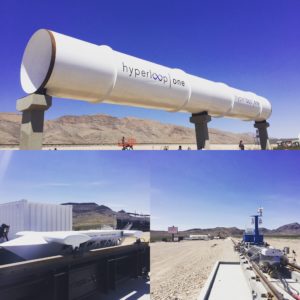20th May 2016 Los Angeles, USA
Hyperloop: Just a Pipe Dream?
In July 2012, Elon Musk touted a proposal that would place the Jetsons within the realm of possibility. He proposed a solar-powered tunnel which could transport people from Los Angeles to San Francisco in an unbelievable 30 minutes. You would think we were discussing the future, but this idea has been floating around for over a century.
In 1869, Alfred Ely Beach proposed a demonstrator project, the Beach Pneumatic Tube, in New York City. Under the guise of a pneumatic mail delivery system, Beach snuck underground to build the first subway. In 1870, the subway ran on compressed air and transported 12 passengers plus a conductor in “cars” to a dead-end and back. It boasted a chandelier, a grand piano and a fully operational fountain with goldfish. The line operated for a few months and closed as a result of a stock market crash.
Sadly, Beach didn’t live to see his pneumatic subway system rebuilt, but his vision is still influencing engineers looking for the future of transportation; engineers like the moustachioed Brogan BamBrogan, the CTO of Hyperloop One, one of two companies looking to bring this technology to reality. And he’s not just talking about it, he’s building the parts in downtown LA’s Arts District. Last week, he led the first public test of the propulsion system for his company, Hyperloop One, in the Nevada desert.
He describes the hyperloop as a cross between the Concorde, a rail gun and an air hockey table. The Concorde was a rapid mode of personal transport, a rail gun uses electromagnetic forces to move objects at high speeds, and an air hockey table reduces sliding friction to almost zero.
The propulsion system test consisted of a sled-mounted rotor and a 187-ft (57-m) long stator. The test went off without any issues with the motor accelerating to 2.5G, reaching 116 mph (187kph) in about one second. According to Bambrogan, the next steps for the team are to build out additional stators which will allow the test rig to eventually reach a speed of 400 mph (643 kph). Hyperloop One plans to deploy a full system test by the end of 2016 at their same test site in Nevada.

The hyperloop won’t just be built for those of us lucky enough to live in California. In fact, it might not even be the first place to see one. Countries around the world are evaluating whether hyperloop systems can be integrated into their current transportation systems. In the UK, the global engineering firm Arup has signed on as a partner to bring their technology and expertise to help build a hyperloop.
As we creep closer to the future, the dreams of the past will become commonplace. A century ago, no one could have guessed that we would hold a computing device within the palm of our hands with the ability to record our every move and inevitably call Joe every time we ask to call John. Right now, the hyperloop may seem like a pipe dream, but maybe in a generation, we will wonder how we ever lived without it.